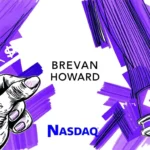Hyperledger Fabric is a pioneering open-source blockchain framework hosted by The Linux Foundation. Designed specifically for enterprise use, it offers a modular architecture that addresses the scalability, privacy, and security challenges that often limit the adoption of blockchain technology in business environments. Since its inception, Hyperledger Fabric has become a cornerstone of enterprise blockchain solutions, empowering industries ranging from finance and healthcare to supply chain and government operations.
Blockchain redefines trust in the digital age, empowering transparency and collaboration.
Akhandsach
In this blog, we’ll explore the unique features, architecture, and use cases of Hyperledger Fabric, and how it’s revolutionizing enterprise blockchain implementation.
What is Hyperledger Fabric?
Hyperledger Fabric is one of the flagship projects under the Hyperledger umbrella, a collaborative initiative launched by The Linux Foundation in 2015 to advance cross-industry blockchain technologies. Fabric stands out among other blockchain frameworks due to its focus on permissioned networks. Unlike public blockchains such as Bitcoin or Ethereum, Hyperledger Fabric is designed for environments where participants are known and trusted.

This permissioned model enables enterprises to create secure and private blockchain networks tailored to their specific needs. Its modular design allows organizations to plug and play components like consensus mechanisms, identity management, and data privacy tools, making it a versatile solution for diverse use cases.
Key Features of Hyperledger Fabric
- Permissioned Network
Hyperledger Fabric operates on a permissioned blockchain model, where all participants must be authenticated. This ensures a secure and trusted environment, making it particularly suitable for enterprise applications where confidentiality and access control are critical. - Modular Architecture
One of Fabric’s most significant strengths is its modularity. It allows organizations to customize various components, such as consensus algorithms, membership services, and smart contracts (called “chaincode” in Fabric). This flexibility makes it adaptable to a wide range of industries and applications. - Scalability and Performance
Fabric’s architecture supports high transaction throughput and low latency. Unlike traditional blockchains that require all nodes to validate every transaction, Fabric employs a novel “execute-order-validate” model, which enhances performance and scalability. - Privacy and Confidentiality
Hyperledger Fabric provides robust mechanisms for ensuring data privacy. Organizations can create private data collections and channels to limit access to sensitive information. This feature is particularly valuable in sectors like healthcare and finance, where data confidentiality is paramount. - Pluggable Consensus
Instead of relying on a single consensus algorithm, Hyperledger Fabric offers a pluggable framework. Enterprises can choose the consensus mechanism that best aligns with their specific requirements, such as Raft, Kafka, or BFT (Byzantine Fault Tolerance). - Smart Contracts with Chaincode
Smart contracts in Fabric, known as chaincode, can be written in general-purpose programming languages like Go, Java, and Node.js. This flexibility reduces the learning curve for developers and facilitates rapid application development.
Architecture of Hyperledger Fabric
To fully appreciate Hyperledger Fabric’s capabilities, it’s essential to understand its architecture. Here’s a breakdown of its core components:

- Peers
Peers are nodes in the Fabric network responsible for executing smart contracts, maintaining the ledger, and validating transactions. There are two types of peers:- Endorsing Peers: Execute smart contracts and generate transaction proposals.
- Committing Peers: Validate transactions and update the ledger.
- Orderer
The orderer is responsible for achieving consensus on the order of transactions and distributing blocks to peers. It plays a critical role in ensuring the consistency of the ledger across the network. - Membership Service Provider (MSP)
The MSP handles identity management and access control. It uses digital certificates to authenticate participants, ensuring that only authorized entities can join the network and perform transactions. - Channels
Channels are private communication pathways within a Hyperledger Fabric network. They allow specific subsets of participants to transact privately, ensuring data confidentiality. Each channel has its own ledger, separate from the main ledger. - Ledger
Hyperledger Fabric employs a dual ledger system comprising:- World State: A database storing the current state of the blockchain.
- Transaction Log: A record of all transactions that have been executed on the blockchain.
- Chaincode
Chaincode is Fabric’s implementation of smart contracts. It contains the business logic that governs how transactions are processed and validated.
Use Cases of Hyperledger Fabric
Hyperledger Fabric’s versatility and robust features make it an ideal choice for various industries. Here are some of its most compelling use cases:
Innovation thrives where technology meets adaptability; Hyperledger Fabric exemplifies enterprise-grade blockchain.
Akhandsach
- Supply Chain Management
Hyperledger Fabric enhances transparency and traceability in supply chains. By recording every transaction on a shared ledger, it allows stakeholders to track the origin, movement, and authenticity of goods. Major companies like Walmart and IBM use Fabric to improve food safety and traceability. - Healthcare
In healthcare, Fabric facilitates secure data sharing between providers, insurers, and patients. It ensures the integrity and confidentiality of electronic health records (EHRs) while enabling interoperability across different systems. - Financial Services
Fabric streamlines processes like cross-border payments, trade finance, and identity verification. Its ability to handle high transaction volumes securely makes it a preferred choice for banks and financial institutions. - Government and Public Services
Governments use Hyperledger Fabric to build transparent and efficient systems for managing land registries, voting, and welfare distribution. The blockchain ensures accountability and reduces the risk of fraud. - Retail and E-Commerce
Fabric enables retailers to verify the authenticity of products and ensure ethical sourcing. It also supports loyalty programs by securely managing customer data and transactions. - Energy and Utilities
Blockchain networks built on Hyperledger Fabric can optimize energy trading, manage smart grids, and track renewable energy certificates.
Advantages of Hyperledger Fabric for Enterprises
- Customizability: Organizations can tailor the blockchain to their specific needs.
- High Performance: Fabric’s unique architecture ensures fast transaction processing.
- Enhanced Security: Its permissioned model and MSP provide robust security and identity management.
- Interoperability: Fabric integrates seamlessly with existing enterprise systems.
- Community and Support: Being an open-source project under The Linux Foundation, Fabric benefits from active community support and ongoing innovation.
Challenges and Limitations
Despite its strengths, Hyperledger Fabric is not without challenges:
- Complexity: Setting up and managing a Fabric network requires technical expertise.
- Resource Intensive: The architecture can be demanding in terms of computational resources.
- Limited Public Access: As a permissioned blockchain, it’s not suitable for applications requiring open access.
Future of Hyperledger Fabric

The future of Hyperledger Fabric looks promising as enterprises increasingly recognize the value of blockchain technology. Innovations like tokenization, interoperability, and support for new consensus algorithms are expected to enhance its capabilities. Moreover, as blockchain adoption grows, Hyperledger Fabric will likely play a pivotal role in shaping the enterprise blockchain landscape.
Breaking Down the Barrier
Hyperledger Fabric has redefined blockchain for enterprise applications by addressing the unique requirements of businesses. Its permissioned network model, modular architecture, and robust security features make it a powerful tool for industries seeking to harness blockchain’s potential. As organizations continue to embrace digital transformation, Hyperledger Fabric stands as a beacon of innovation, paving the way for secure, transparent, and efficient blockchain solutions.
Whether you’re a developer, business leader, or blockchain enthusiast, understanding Hyperledger Fabric is key to unlocking the next generation of enterprise solutions.















